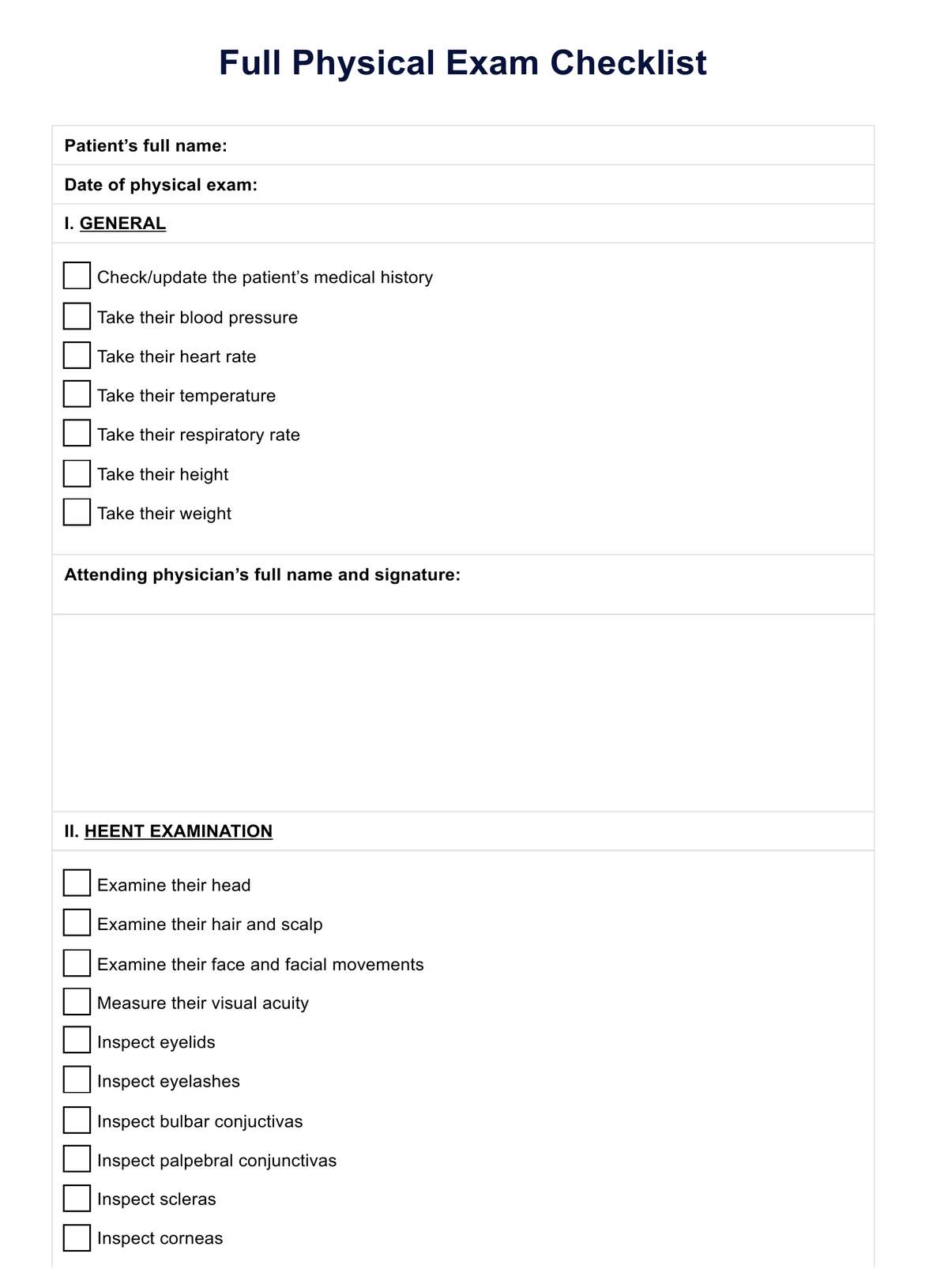No. These examinations are more like screening assessments. These can identify symptoms of potential problems, but for diagnosing actual problems, specific tests beyond this examination need to be conducted afterward. These examinations also can’t detect all possible issues, but they can at least assess patients thoroughly.

Full Physical Exam Checklist
Learn about our Full Physical Exam Checklist PDF template and use it for your practice!
Use Template
Full Physical Exam Checklist Template
Commonly asked questions
This needs to be discussed with their healthcare provider. Still, usually, patients have to prepare their medical history and inform their provider about any medications they’re taking, and fast because of the blood tests, stool tests, and urine tests.
No set number of times (unless mandated by a doctor, school, or employer) exists. Taking one at least once a year is recommended so patients know their health statuses.
EHR and practice management software
Get started for free
*No credit card required
Free
$0/usd
Unlimited clients
Telehealth
1GB of storage
Client portal text
Automated billing and online payments











